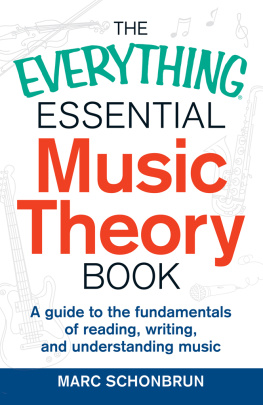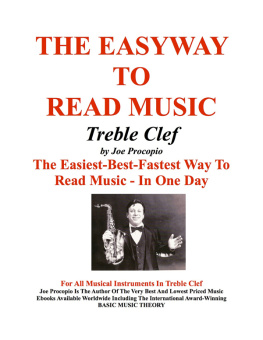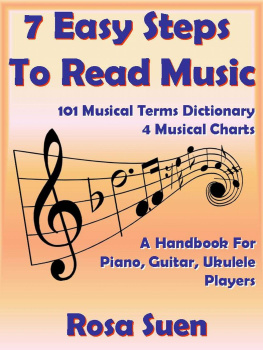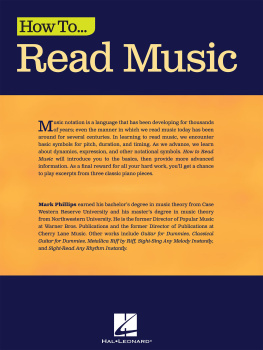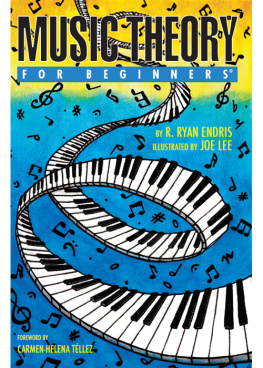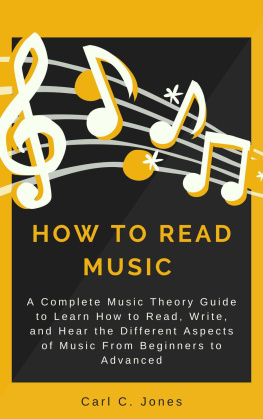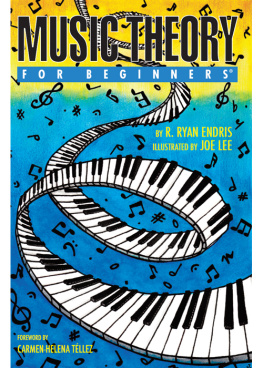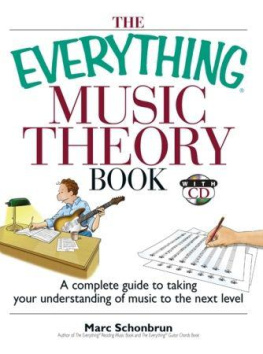Nicolas Carter - How To Read Music: For Beginners - A Simple and Effective Guide to Understanding and Reading Music with Ease
Here you can read online Nicolas Carter - How To Read Music: For Beginners - A Simple and Effective Guide to Understanding and Reading Music with Ease full text of the book (entire story) in english for free. Download pdf and epub, get meaning, cover and reviews about this ebook. year: 2017, genre: Home and family. Description of the work, (preface) as well as reviews are available. Best literature library LitArk.com created for fans of good reading and offers a wide selection of genres:
Romance novel
Science fiction
Adventure
Detective
Science
History
Home and family
Prose
Art
Politics
Computer
Non-fiction
Religion
Business
Children
Humor
Choose a favorite category and find really read worthwhile books. Enjoy immersion in the world of imagination, feel the emotions of the characters or learn something new for yourself, make an fascinating discovery.
- Book:How To Read Music: For Beginners - A Simple and Effective Guide to Understanding and Reading Music with Ease
- Author:
- Genre:
- Year:2017
- Rating:3 / 5
- Favourites:Add to favourites
- Your mark:
How To Read Music: For Beginners - A Simple and Effective Guide to Understanding and Reading Music with Ease: summary, description and annotation
We offer to read an annotation, description, summary or preface (depends on what the author of the book "How To Read Music: For Beginners - A Simple and Effective Guide to Understanding and Reading Music with Ease" wrote himself). If you haven't found the necessary information about the book — write in the comments, we will try to find it.
** A Successor and a Sibling to the Best-Selling Book: Music Theory - From Beginner to Expert, by Nicolas Carter **
- Bars, notes, clefs, staves, time signatures, common notation, musical symbols Have you ever wanted to learn how to read music but it seemed too difficult and not worth the effort?
- Have you tried searching for information online only to find yourself more confused by the seeming complexity of music theory and written music?
- Do you think that being able to read music and sightreading is only reserved for professional musicians who have had expensive education?
- Do you want to be able to quickly learn how to read sheet music and have a proper understanding of how music is written?
- Do you want to advance your skills as a musician?
This in-depth book is the answer you may be looking for. This is the straightforward and concise guide meant to show that learning this valuable and impressive skill can be made simple, easy and fun, for any musician, on any instrument, at any time. It is meant to show that there is a simple process to learning anything, and music reading is no exception. You dont have to attend music schools or expensive private classes and courses; anyone can learn how to read music by being self-taught.
This book is going to help you easily understand music notation and how it relates to music theory. Along with the provided images, sheet music scores and music reading exercises, it will help you to build a proper foundation of knowledge, understanding, and skill; a foundation that will help you move forward as a musician.
Heres a sneak peak of what youll get:
- A detailed overview of a typical musical staff and its elements.
- A detailed explanation on frequency ranges, clefs and their relation to note pitches.
- Everything you need to know about key signatures and how to interpret them.
- A thorough understanding of the circle of fifths.
- Best step-by-step approach to reading notes and chords.
- Solfege explanation.
- A complete guide on how to read rhythms, how beat is divided, note durations, rests, ties, dotted notes.
- Fundamental rhythmic blocks and how to create rhythm patterns.
- How dynamics, articulation and extended techniques are notated.
- A complex exercise set to practice your skills and start sightreading!
- And much, much more...
You can get this book today for a limited time low price >> Simply scroll back to the top and click on Buy now button.
Nicolas Carter: author's other books
Who wrote How To Read Music: For Beginners - A Simple and Effective Guide to Understanding and Reading Music with Ease? Find out the surname, the name of the author of the book and a list of all author's works by series.



